WORLD CLASS COACHING
4-2-3-1 Attacking
By Luca Bertolini
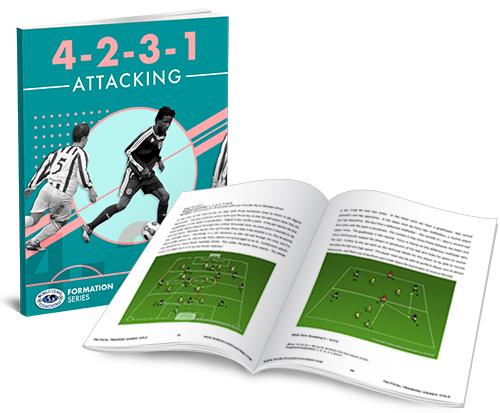
Table of Contents
PART FOUR
Players/Positions Roles and Responsibilities
4-2-3-1 History, Different Line Ups and Applications
Players/Positions Roles and Responsibilities
Goalkeeper:
• He is more responsible for making saves and keeping the ball out of the net than in other formations (example 1-4-3-3), as the center backs and the midfielders can be considered as the heart of the building up phase; the most important thing is to be a safe back passing option during building up phases.
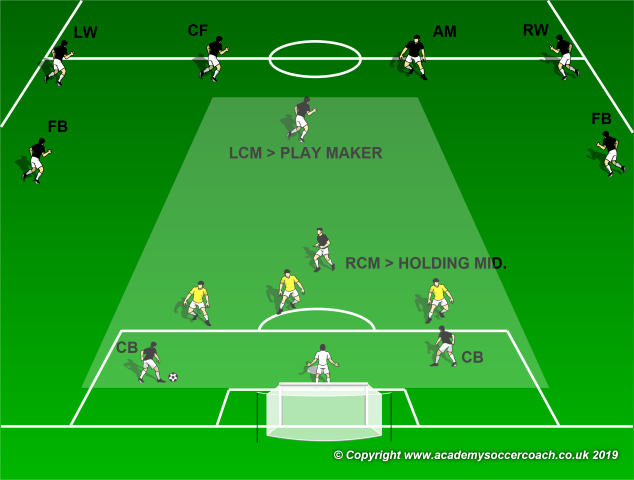
• As the team is supposed to be solid in the center due to the center backs and center midfielders, the majority of the opposition’s attacks are likely to come from the flanks; for this reason, the he must be confident to save crosses or cut back passes from box’s sides. If we take as example Manchester City attacking shape, the spaces at the back of the inverted fullbacks and beside the center backs are the more risky for a 1-2-3-5 development of the 1-4-2-3-1 formation.
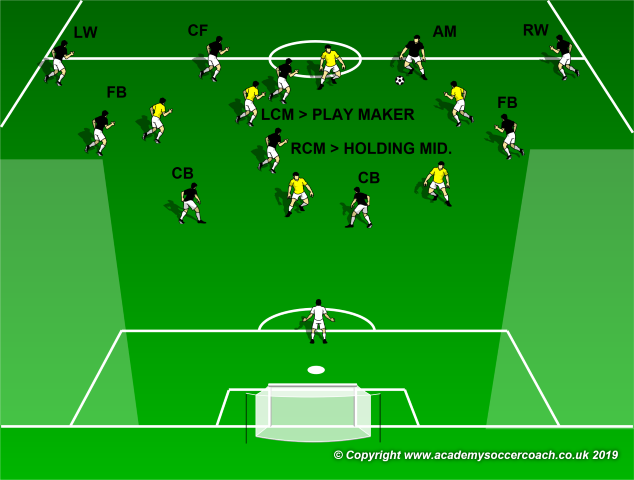
Center backs:
• Decision making and positioning to start the moves and to help the midfielders as back support.
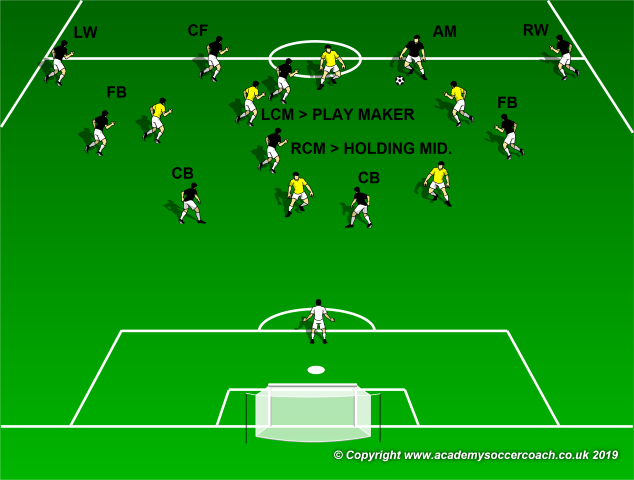
• Be able to move forward to shape the midfield trio as third man, if the inverted fullback or the advanced midfielder can’t.
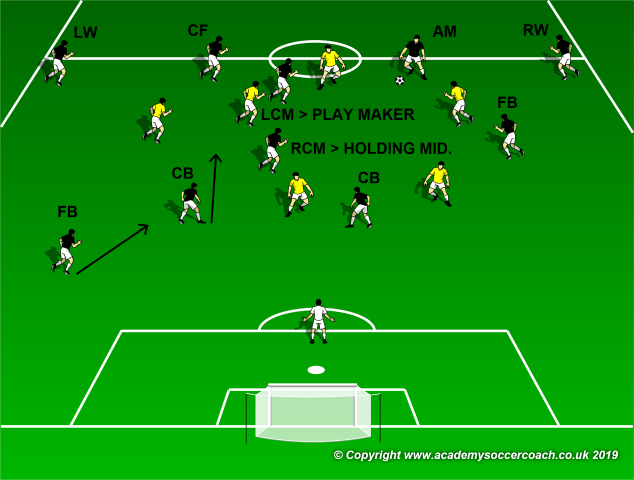
• Provide balance at the back of the ball position in the first third, helping the positive transition phases.
Fullbacks:
• They must be ready to support the building up phases and to push up to support the maintenance and attacking phase.
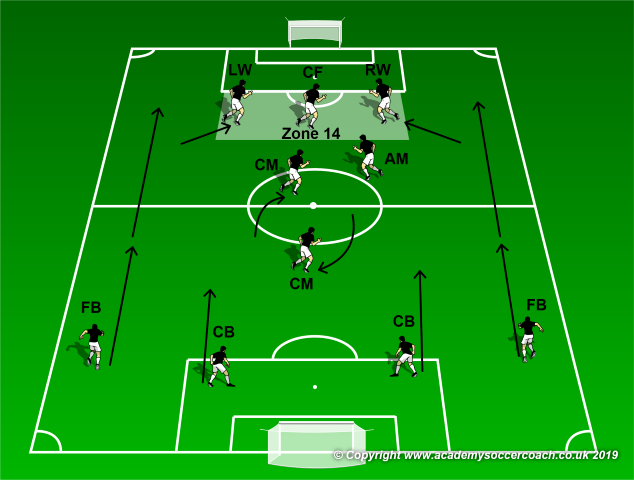
• They must be able to play as inverted fullbacks to help the center midfielders, condensing the middle third and opening up spaces wide that could be exploited in the finishing stages of the moves.
In the following picture, the situation of play that we already analyzed, is very explicative from this point of view; Manchester City left fullback Zichenko and right fullback Walker complete the holding midfield trio as the second center midfielder is positioned along the left side and the center advanced midfielder has pushed up along the forwards’ line.
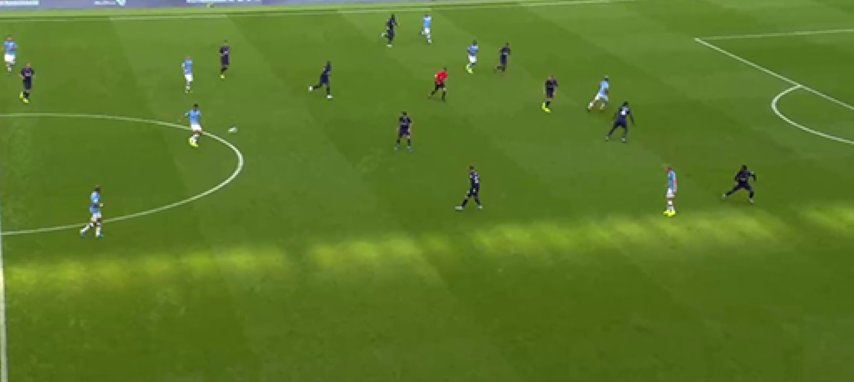
• They must be side support for the center midfielders, back support for the wingers as well as overlapping player down the flanks; moving on and off the ball are crucial to create situations with numerical advantage.
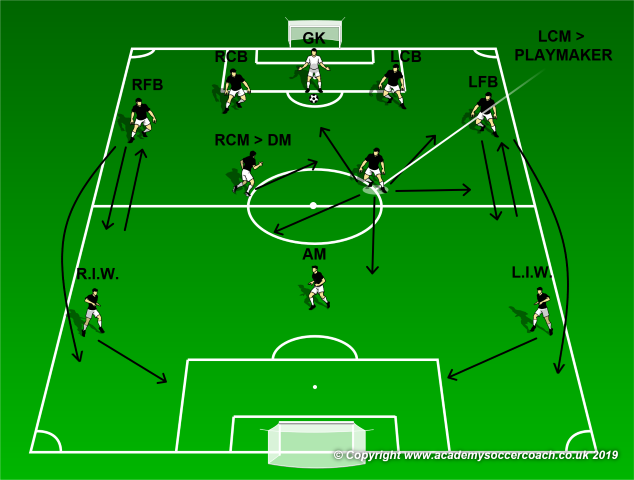
Center midfielders (the success of the 1-4-2-3-1 system of play largely depends from these two players, both from attacking and defending points of view):
• They should not drop too deep nor remain too high up the pitch.
• Positioning and basic technical skills are always very important.
• One of them should be a holding midfielder with defensive tasks; the other is usually asked to be more attacking-minded with play making skills (double playmakers or box-to-box midfielders are usual alternatives).
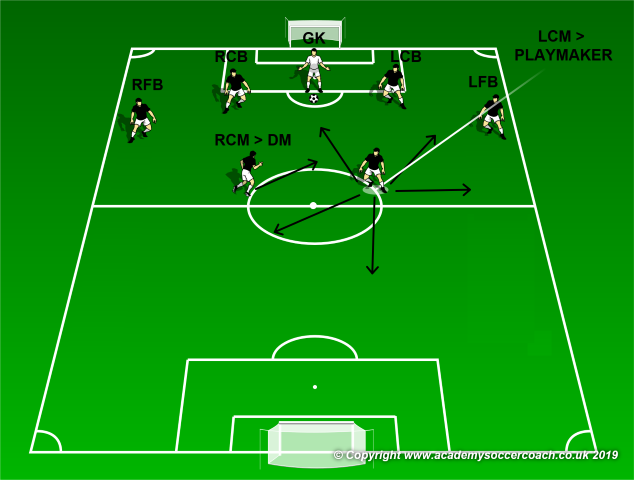
• To pick the ball up from the defenders and aim to move it forward are anyway required task, whatever the players’ skills are.
• They must be to overload the ball area and the half spaces
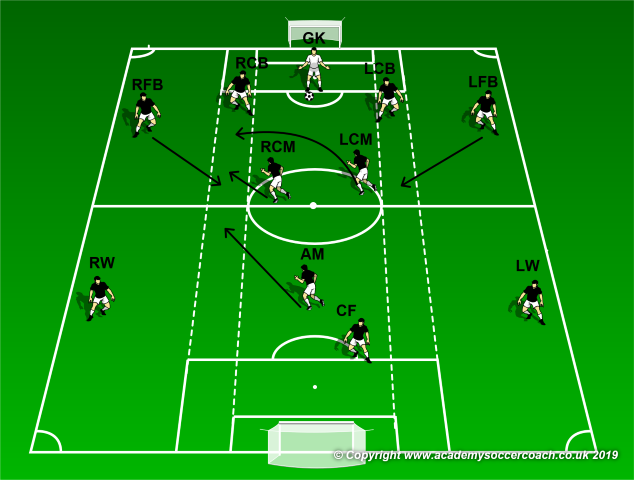
In this first example, both the center midfielders drops back to overload the right lower half space, creating a four players' area that could be useful to invite the opposition pressure toward a specific area, to free a farther one to switch the side of play.
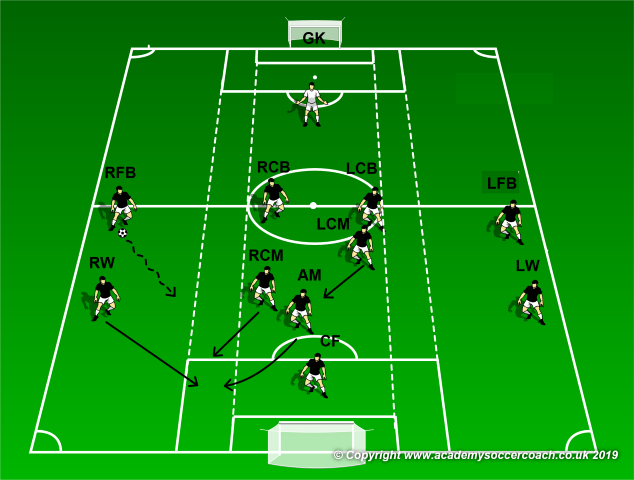
In this second example, the right center midfielder moves forward to overload the attacking right half space to invite the opposition pressure toward the ball area, where the fullback is dribbling the up, and to free the opposite flank for the wing to run along.
The second midfielder shifts across the center, to provide balance and to cover the space toward the center backs.
• Creativity seems to be no the first skills for them, due to the three attacking midfielders in front of them but it is obviously useful; it’s more important to cooperate with the front 3 to create angles and passing options for each other while moving on and off the ball, as well as spacing for each other. Blind runs skills are very important also.
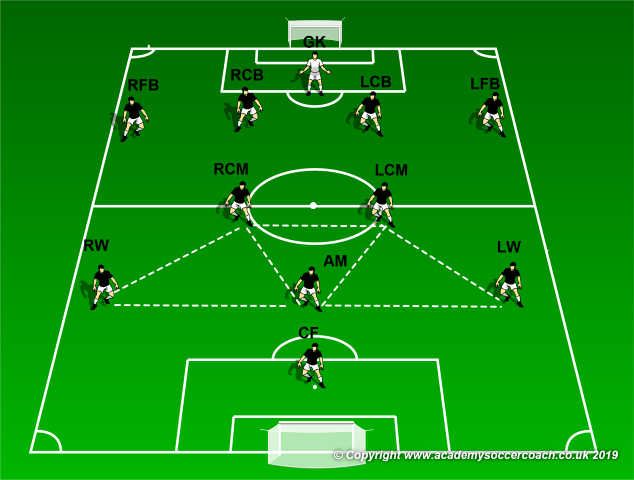
1-4-2-3-1 is the best system of play to create possession triangles and passing angles in the middle third; only on paper, there are already three main triangles that can be exploited; the most important task for the center midfielder is to be able to reshape these triangle, following the developments of the possession situations and the movements on and off the ball of the front three.
Advanced midfielder
• The advanced midfielder behind the striker is usually asked to be the most creative of all the squad; for this reason, he is not often charged of defensive tasks. He can also act as additional advanced playmaker
• He must create numerical advantage near the ball, overloading the half spaces, as the center midfielders
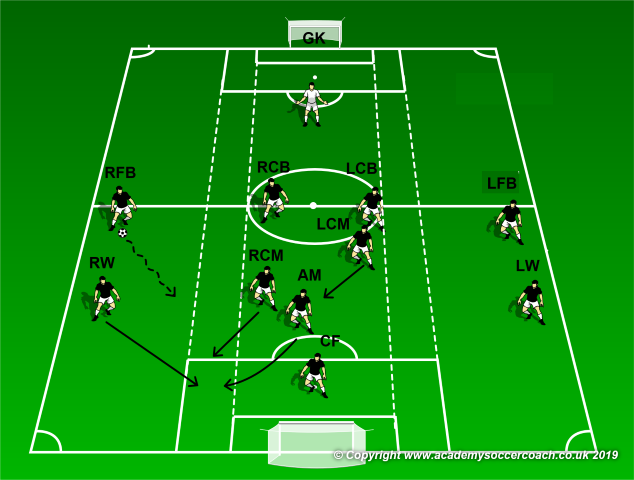
• He is asked to be good at moving off the ball:
1. To be a forward option for the midfielders and to create space for them…
2. …back support for the center forward…
3. …inside option for the wingers…
4. …and to be ready to play between the opposition lines.
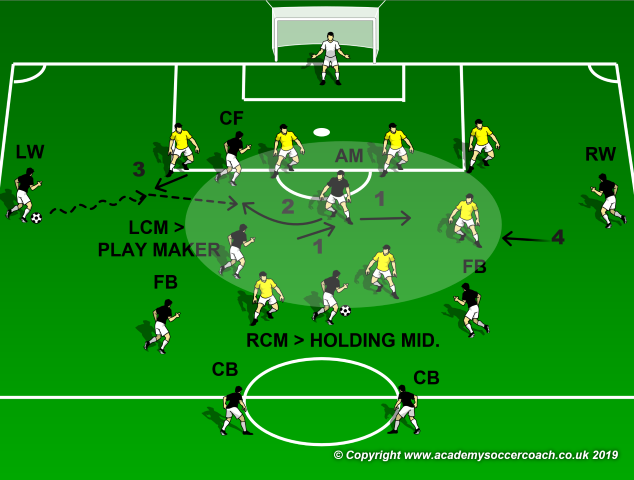
• He must be able to interchange the positions with the center forward, the wingers and the center midfielders
Wingers:
• They must play with high rhythm out wide to attack quickly along the flanks.
• They are asked to combine with the fullbacks to create 2 v 1 duels against the opposition’s fullbacks (advanced midfielder should shift wide to create a bigger numerical advantage situations if the opposition winger is able to help the fullback)
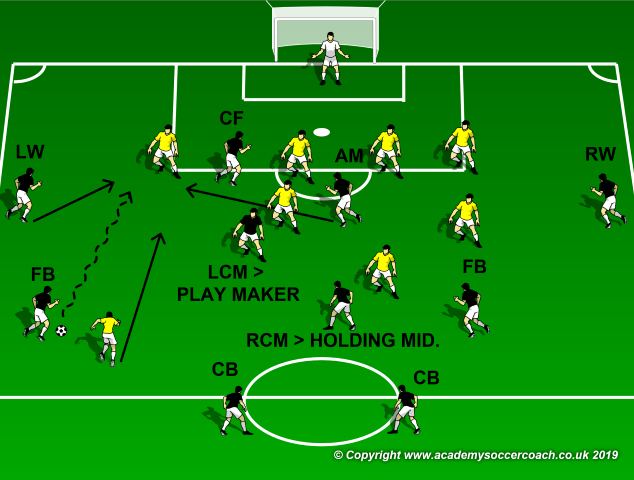
• They must be able to come inside and to drop into the gaps between the opposition’s defense and midfield lines to combine with the center advanced midfielder
• They are asked to be able to make blind runs over the last defense line to receive and finish
Center Forward:
As already briefly analyzed, the center forward can be:
1. An upper pivot or target player, holding the ball to allow the team pushing up the field
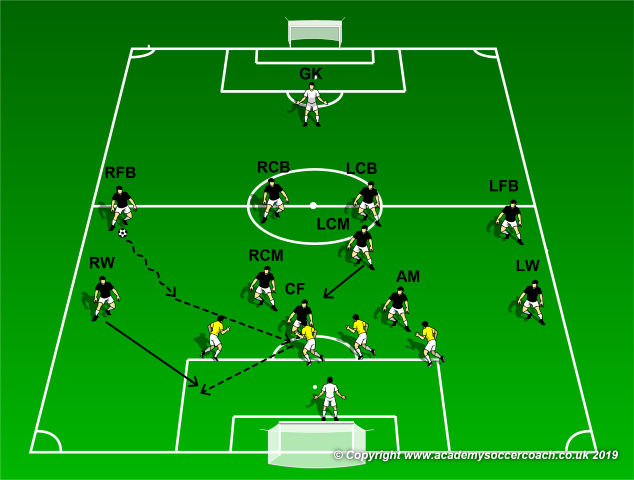
2. A player who is good at playing along the opposition defense line
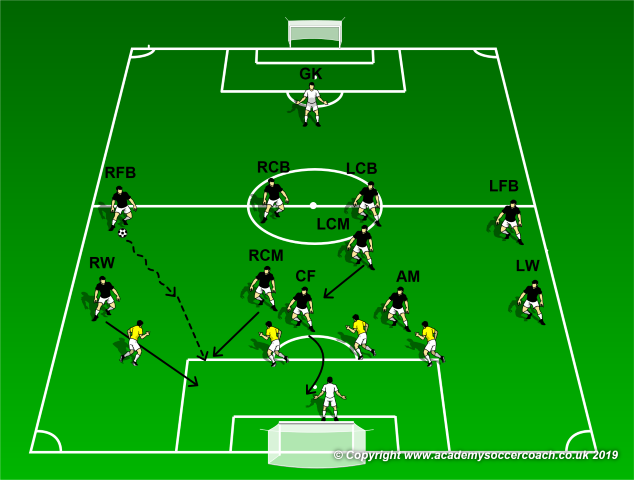
3. A false 9, if the wingers are inverted foot players, if they play inside the field and if the advanced midfielder is able to play as second center forward
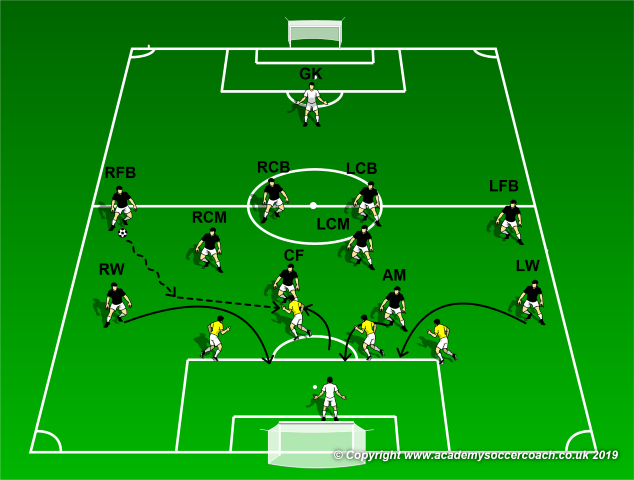
Despite all these potential skills, his goal scoring skills should at the best level possible.
1-4-2-3-1: history, lines up and applications
Juan Manuel Lillo is not only the inventor of the "Juego de Posicion" (Positional Play), but he is also the first ever coach to shape his team with the 1-4-2-3-1 during the early '90s as Cultural Leonesa (1991-1992) and UD Salamanca (1992-1996) coach.
Which were the objectives? To reach the same ones of his soccer philosophy: to ensure high pressure, thanks to 4 advanced players and to regain the ball as soon as possible in case of loss of possession, providing center defensive cover thanks to the 2 holding midfielders (double pivot) and being safe at the back because of 5 players, even if one of the full backs has pushed forward.
This is what Lillo was used to say, while coaching Leonesa:
"It was the most symmetrical way I could find of playing with four forwards. One of the great advantages is that having the forwards high allows you to play the midfield high and the defense high, so everybody benefits. But you have to have the right players. They have to be very, very mobile and they have to be able to play when they get the ball. You have to remember that they're pressuring to play, not playing to pressure".
From this point of view, we may say that 1-4-2-3-1 can be considered as a late '80s Sacchi's Ac Milan evolution; even is that unforgettable team was based on the 1-4-4-2, the ideas of possession and of mobility of the whole team were the same.
The very successful team to be shaped with this system of play was France at 2000 Europe Nations Cup:
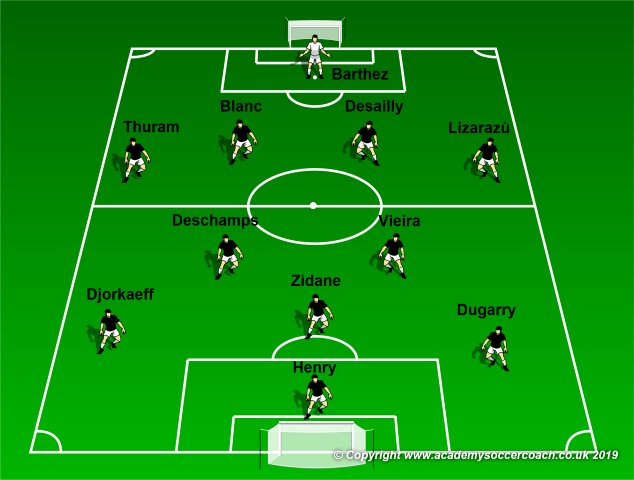
The center backs and the Vieira were positional defensive players, Thuram and Lizarazu attacking minded fullbacks. Zidane worked in a pivotal role, to receive the ball and distribute; Deschamps was a second play maker, a second and safe passing options, as Zidane played in a more direct way. Dugarry, Djorkaeff and Henry were the real attackers of the team.
Another important formation who had a great success with the 1-4-2-3-1 was Spain at the 2010 World Cup winning campaign:
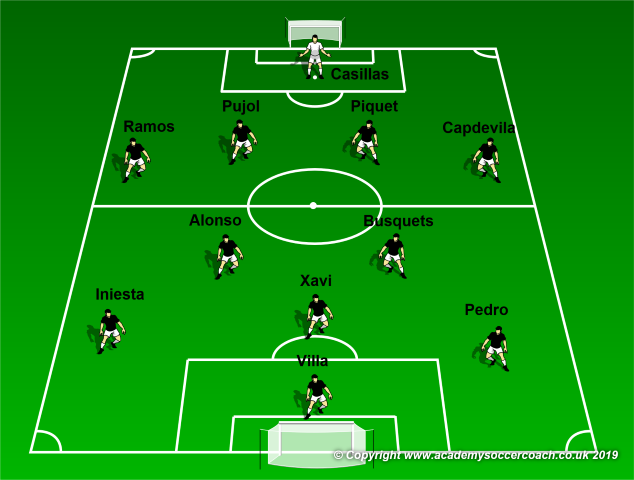
Despite the Spanish tiki-taka possession style, the starting formation was like a 1-4-2-3-1, with continuing and grueling exchanges of positions among the four advanced players and Busquets as holding midfielder in front of Pujol and Piquet.
To close the National teams’ chapter, Germany 2014 World Champion must be included:
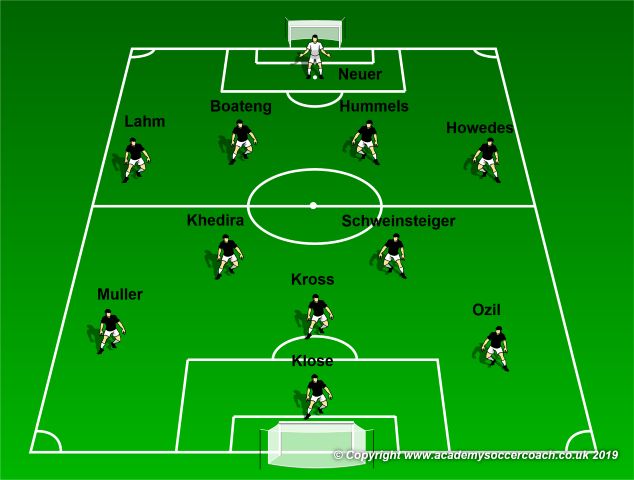
Klose played as advanced target player, Muller as second striker on the right flank and Ozil was free to move all around the middle third. Kross was an advanced playmaker, with the center midfielders in a balancing role. We should not forgive that 2013/2014 was the first season of Guardiola in charge as Bayern Munich head coach.
Despite being an attacking oriented system of play, the 1-4-2-3-1 of Mourinho’s Internazionale Milan 2010 Treble was a defensive and transition minded team.
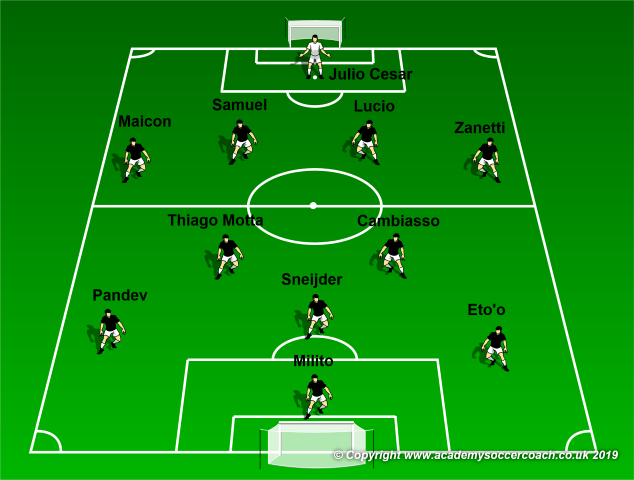
Samuel and Lucio were blocked at the back, Cambiasso had defensive tasks and Thiago Motta played as lower play maker, without moving too much further than the half line. Maicon and Zanetti were attacking minded fullbacks but Pandev and Eto’o were always ready to cover their positions. The keys of that teams were Sneijder, who were so good at receiving the first passes of the transition to attack phases and to transform those balls in attacking phases and Milito, who scored goals from anywhere and in any way.

The biggest difference between Mourinho’s Internazionale Milan and the following experience as Real Madrid’s Head Coach was the role of the striker, as Benzema played as space creator for Ronaldo, Di Maria and Bale whose arrival transformed Real in a 1-4-3-3 team the season after.


